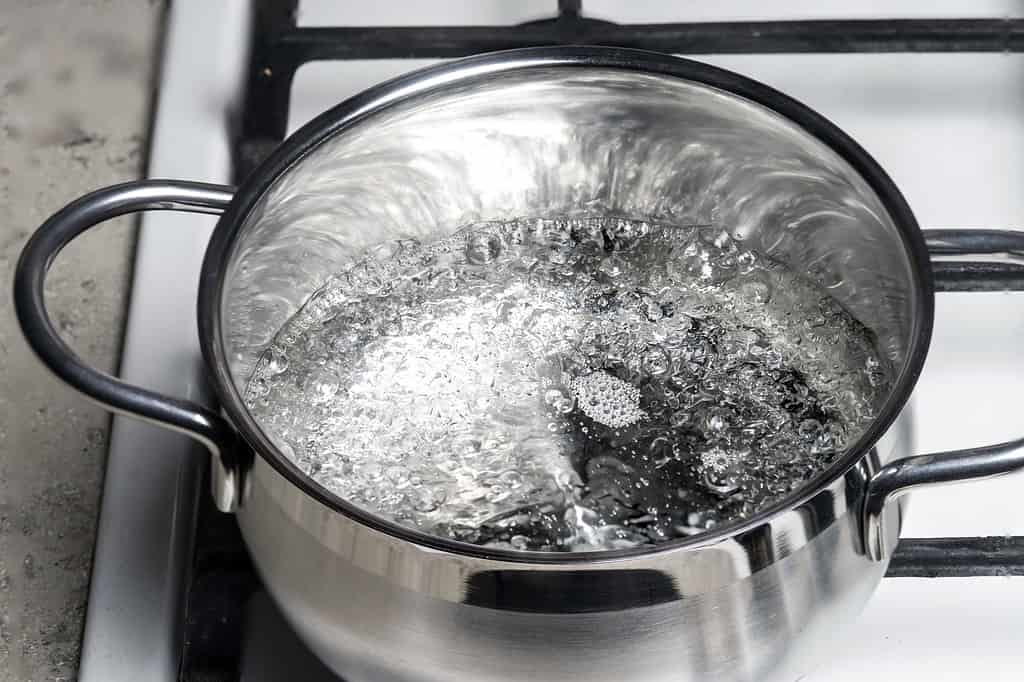Dandelions are well-known for their bright appearance and supposed ability to make your wishes come true. Additionally, many use dandelions for medicinal purposes, like to improve digestion, boost the immune system, or reap an antioxidant effect.
However, these perennial broadleaf weeds can also be a nuisance to your yard. While they might offer a pop of color to your lawn, they can also spread quickly and compete with your grass and other desired vegetation. If your yard has a dandelion problem that’s beginning to get out of control, there are ways you can kill the weed.
Below are the seven most effective ways to get rid of dandelions in your yard — once and for all.
1. Dig Them Up
While it might seem obvious, digging up dandelions usually does the trick. Simply wet the soil around the weeds to make it easier to remove their roots. Then, using a weeding knife or other tool, cut around the edges of the weeds to dig up their roots.

If your yard is filled with dandelions, you might not be able to dig them all up on your own.
©Niliane Fatima Pierok/Shutterstock.com
Once you’ve reached the bottom of the roots, wiggle the tool around to move it away from the surrounding soil. Gently tug on the roots of the dandelions, making sure you remove all of them. Even the smallest bit of root left in the soil can sprout new growth.
2. Spray Them With a Herbicide
The best time to spray dandelions is during late summer or early to mid-autumn. However, make sure there’s no rain in the forecast that can dilute or even spread the herbicide to surrounding vegetation.

Herbicide is a great weed killer, and the right one won’t kill your grass.
©Worledit/ via Getty Images
You can choose between a chemical herbicide and a natural herbicide. However, keep in mind that a harsh chemical herbicide can be toxic to wildlife and other desired vegetation. Natural herbicides are more sustainable and can promote the healthy growth of your grass while still taking care of your dandelion issue. You can even make your own weed killer at home using a vinegar, dish soap, and salt solution.
3. Use Boiling Water
Boiling water can quickly kill your dandelions, and this method is incredibly easy and affordable. Simply boil water on your stove using a kettle or pot, then pour it over the dandelions to scorch their leaves and roots. Once they die and brown out (likely within a few hours), you can pull them out of the grass.

Because boiling water works similarly on all vegetation, it might kill desired areas of your lawn.
©VladK213/iStock / Getty Images Plus via Getty Images
Be sure to avoid pouring boiling water over grass or other desired plant growth as much as possible.
4. Use Acetic Acid
Vinegar contains acetic acid that can kill pesky dandelion weeds. However, some types of household vinegar aren’t strong enough to do lasting damage, so you might need to use horticultural vinegar, which contains at least 20% acetic acid.

Vinegar’s acidic properties make it a great weed-killer.
©iStock.com/Michelle Lee Photography
Because of its acidic properties, be extremely careful when applying this treatment to your weeds. Consider wearing protective gear like goggles or gloves to avoid burning your skin. Additionally, try not to get the vinegar on other parts of your lawn or desired vegetation, as it will surely kill them as well.
5. Flame the Dandelions
Using a weed torch, you can burn or “flame” your dandelion weeds. The hot propane torch should kill the immature seedlings and prevent new growth in the area. However, it’s not as effective on grown dandelions, as their root systems will typically survive the encounter.

Dandelions spread super easily, and it’s always best to treat them at their root system to fully get rid of them.
©Wirestock/iStock via Getty Images
Additionally, if you’re using this method on seedlings, beware you don’t burn or kill your grass in the process. This is a great tactic for bunches of immature dandelion growth to prevent it from taking over. Even so, using a torch can pose many risks, so do this at your own discretion.
6. Use Pre-Emergent
If you’re anticipating a dandelion issue in your yard, you can prevent it ahead of time using a pre-emergent. Typically, you’d apply this early in the spring or during winter to deter dandelion growth. This will ensure dandelion seeds have no chance of growing.

Dandelions are easy to prevent with a pre-emergent.
©nadia_if/Shutterstock.com
However, if you are already experiencing dandelion overgrowth in your yard, this solution likely won’t solve the problem. It’s best used before dandelions have flourished and probably won’t kill existing ones.
7. Mow Your Lawn
Sometimes, simply mowing your lawn will do the trick in ridding it of dandelion growth.

Keeping up with lawn care is your best bet at preventing weed growth.
©africa_pink/Shutterstock.com
Regularly mowing your lawn will prevent dandelion spread and cut the flowering parts of the plant off, which will eliminate the bright yellow appearance.
Thank you for reading! Have some feedback for us? Contact the AZ Animals editorial team.








